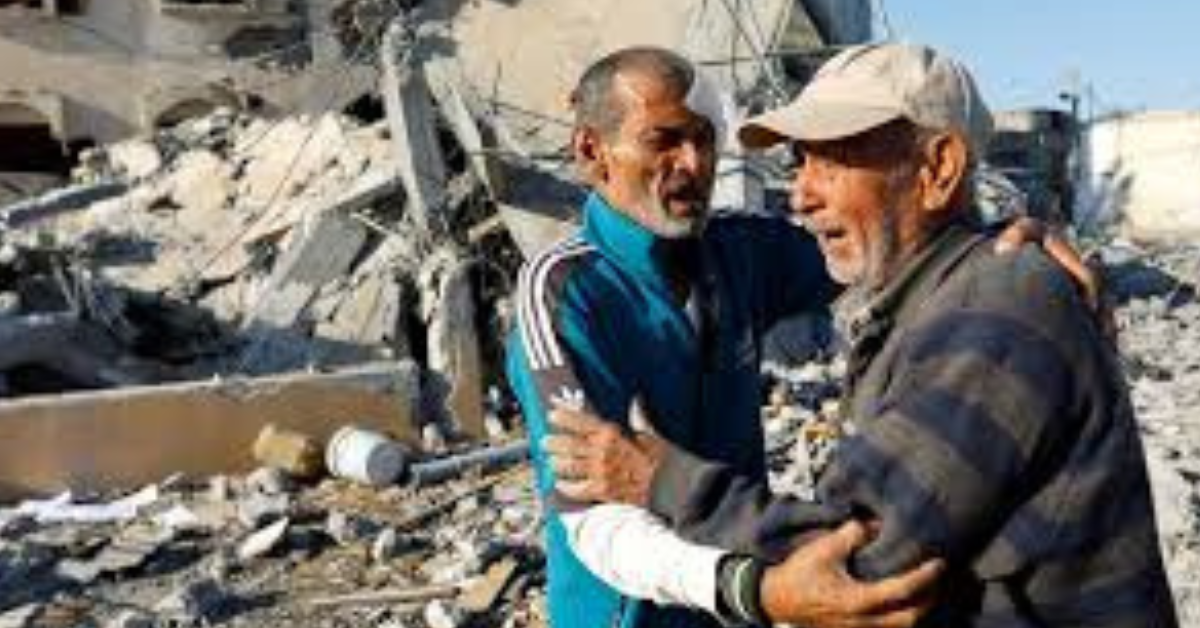Israel-Hamas Conflict:
Here is the information we have:
-
Israeli warplanes carried out airstrikes in southern Gaza following the collapse of a truce with Hamas. According to Gazan health authorities, these attacks have resulted in the deaths of over 15,000 people since October 7th.
-
Israeli authorities have called for the evacuation of certain areas in southern Gaza, which could potentially indicate an upcoming invasion.
-
The United States strongly opposes the relocation of Gazans to Egypt or camps outside of the enclave, as stated by the Vice President.
-
The U.S. Defense Secretary is providing advice to Israel based on his experience with urban warfare in Iraq.
-
The release of hostages in Tel Aviv has given hope to protesters, who are advocating for the safe return of those who are still held captive.
-
Gazans are once again facing dire circumstances, including the need to find safe areas and access to food.
-
During the pause in fighting, Israel released a total of 240 Palestinians.
Israeli Military Bombards Southern Gaza and Orders Evacuations
On Saturday, amidst the Israel-Hamas Conflict, the Israeli military launched a bombardment on southern Gaza and issued evacuation orders to residents of several Palestinian border towns. This development indicates that Israeli forces may be gearing up for a ground invasion in the southern region following the breakdown of the truce with Hamas.
The villages that were ordered to evacuate are located between the Israeli border and Khan Younis, indicating that Israeli forces may be planning to advance through them during the invasion. These villages include Al Qarara, Bani Suheila, Abasan, and Khuza’a.
The war has already displaced more than three-quarters of the population in Gaza, with about 1.8 million people being displaced, according to the United Nations. Many of them have nowhere left to seek refuge. Despite Israel’s instructions for civilians to head to safer areas, such as Al-Mawasi or parts of Rafah, some residents are reluctant to move due to ongoing strikes and a lack of shelter, fuel, water, and food in those areas.
An anonymous senior Israeli official mentioned that the next phase of the war will not be a prolonged campaign. Israeli forces are expected to engage in a high-intensity operation in the coming weeks before shifting to a low-intensity mode.
It is also noted that Palestinian armed groups, particularly Hamas, still hold approximately 150 hostages, most of whom are alive. Israel may be willing to negotiate to bring them home for burial. The Israeli military announced that the body of Col. Assaf Hamami, who was killed in Hamas’s attack on October 7th, is being held by militants inside Gaza.
Vice President Kamala Harris made a strong declaration on Saturday, stating that the United States vehemently opposes the forced relocation of Gaza residents outside of the enclave in the context of the Israel-Hamas Conflict. This statement comes as Israel resumes its bombardment targeting Hamas terrorists and in anticipation of the aftermath of the war.

After a meeting with President Abdel Fattah el-Sisi of Egypt in Dubai, Vice President Harris issued a statement expressing her firm rejection of the idea of moving Palestinians into Egypt or refugee camps in other locations. This statement represents her strongest stance to date, as she urges Israel to minimize harm to civilians during its air and ground campaigns in the Israel-Hamas Conflict.
Defense Secretary Lloyd J. Austin III has emphasized the need for Israel to prioritize the protection of civilians and facilitate the entry of humanitarian aid into Gaza as it continues its conflict with Hamas. Without these measures, Israel risks a strategic defeat.
Following the breakdown of a weeklong cease-fire and the resumption of Israeli military operations, which are now concentrated in southern Gaza, officials in the Biden administration have been advocating for more precise and targeted strikes to minimize civilian casualties. Drawing on his extensive experience in urban warfare from his time in the Iraq war, Secretary Austin understands the challenges involved in securing victories in such conflicts.
The Gazan Health Ministry released a statement on Saturday afternoon, reporting that the Israeli strikes on Gaza since the Hamas-led attacks on October 7th have resulted in the deaths of over 15,000 people. American officials have been conveying to Israel that it cannot pursue a campaign in southern Gaza that would have the same devastating consequences as in the north.
During his speech at the annual Reagan National Defense Forum in California, Defense Secretary Lloyd J. Austin III drew upon his experience in Iraq and his leadership in the international coalition against the Islamic State in Iraq and Syria. He urged Israel to exercise greater caution to prevent civilian casualties, emphasizing the importance of protecting civilians in urban warfare.
Drawing parallels to the campaign in Iraq, Secretary Austin highlighted how the international coalition established humanitarian corridors for civilians to evacuate even during intense battles. Similarly, he noted that Hamas fighters are deeply embedded in urban areas of Gaza, and Israel’s campaign must prioritize the protection of civilians. Secretary Austin stressed that safeguarding civilians is both a moral responsibility and a strategic imperative.
He emphasized the lesson learned from urban warfare, stating that winning can only be achieved by protecting civilians. If civilians are driven into the hands of the enemy, a tactical victory is replaced with a strategic defeat.
Secretary Austin emphasized the need to find a way for both parties to share the land and reiterated that a two-state solution remains the only viable path to resolve the Israeli-Palestinian conflict. Without a hopeful future, the conflict will continue to fuel instability, insecurity, and human suffering.
( reporting from Simi Valley, Calif.-NYTimes)




4 thoughts on “Israel-Hamas Conflict: Unrest Sends Shockwaves as Israel Commences Airstrikes and Urges Evacuations in Southern Gaza”